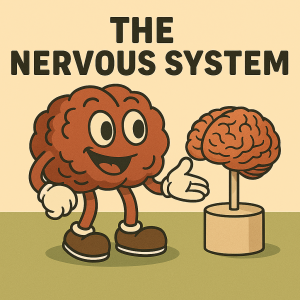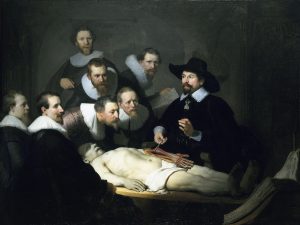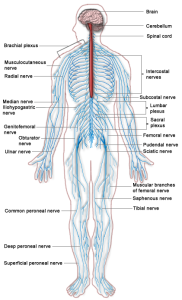Module 02: The Nervous System

Description: This module explores the structural organization of the nervous system, from basic anatomical directions to complex brain structures. You’ll learn how the central & peripheral nervous systems are organized, protected, & supplied with nutrients, as well as how our nervous system evolved to its current sophisticated form.

Why This Module is Important: Understanding the anatomy & organization of the nervous system is foundational for all areas of psychology, especially counseling, clinical, & health psychology. This module equips students with the biological knowledge needed to interpret how brain structures relate to behavior, emotion, & cognition.
For counselors, this understanding is critical for:
- Recognizing how damage or dysfunction in specific brain regions can influence mood, behavior, & cognitive abilities.
- Supporting clients with neurological or developmental disorders by understanding the biological basis of their symptoms.
- Communicating effectively with interdisciplinary teams, including physicians & neuropsychologists, when making referrals or developing treatment plans.
For other psychology professionals, this module supports:
- Research into brain-behavior relationships & the neural basis of psychological phenomena.
- Educational strategies that accommodate neurodiversity & brain-based learning differences.
- Clinical decision-making in diagnosing & treating conditions like stroke, traumatic brain injury, & neurodegenerative diseases.
Module Learning Objectives: By the end of this module students will be able to…
- MLO1: Apply anatomical directional terms & planes of section to locate structures within the nervous system. (CLO1, ULO2)
- MLO2: Differentiate the major components & functions of the central & peripheral nervous systems, including protective structures & blood supply. (CLO1, CLO4, ULO2)
- MLO3: Analyze the evolutionary development of the human nervous system & evaluate theories about rapid brain evolution in humans. (CLO2, CLO3, ULO2)
Test Yourself: If you truly “know” this material then you will be able to…
- Navigate through brain structures using anatomical directions (rostral/caudal, dorsal/ventral, medial/lateral) & identify structures in different planes of section (coronal, sagittal, horizontal). (MLO1)
- Explain the functions of major brain structures (medulla, pons, cerebellum, midbrain, thalamus, hypothalamus, limbic system, cortical lobes) & describe how the meninges & cerebrospinal fluid protect the nervous system. (MLO2)
- Compare the rapid evolution of the human cerebellum versus neocortex & evaluate how this relates to technical intelligence & language development. (MLO3)
Media Attributions
- Nervous Buddy © Microsoft Copilot adapted by Jay C. Brown is licensed under a CC0 (Creative Commons Zero) license
- The Anatomy Lesson of Dr. Nicolaes Tulp © Rembrandt is licensed under a Public Domain license
- Diagram of the Human Nervous System © Persian-Poet Gal is licensed under a Public Domain license
